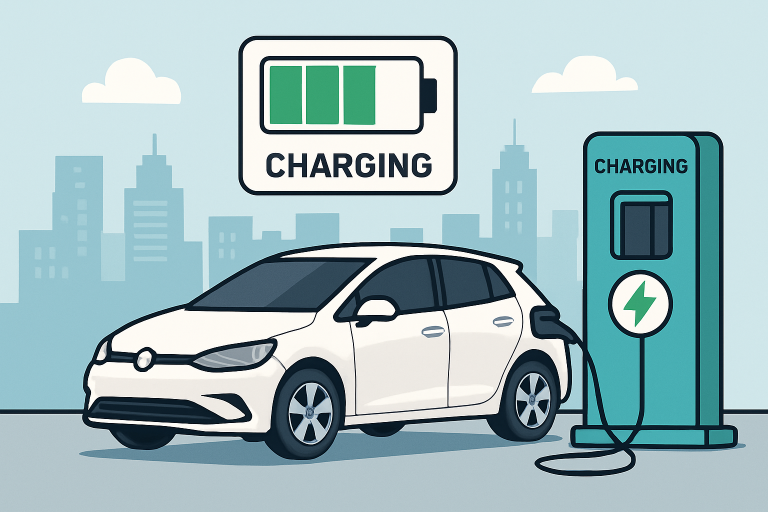Electric vehicles (EVs) are reshaping how we think about transportation, offering cleaner alternatives to traditional gas-powered cars. With advancements in battery technology, charging infrastructure, and government incentives, more drivers consider EVs a practical, eco-friendly choice for everyday use. The growing variety of models and price points makes them accessible to a broader range of consumers.
Understanding key factors like range, charging time, and long-term maintenance is essential before switching. Innovations are happening fast, and staying informed helps you make the best lifestyle and budget decisions. Connecting with local auto experts to learn more about available EVs and dealership resources is a significant next step toward a more sustainable and future-ready way of driving. As adoption increases, EV ownership is quickly becoming a mainstream experience rather than a niche trend.
Advancements in Battery Technology
Battery technology plays a crucial role in the EV revolution. Innovations such as solid-state and lithium-iron-phosphate batteries have enhanced driving range and charging times. By 2025, most models can typically go 300-500 miles on a single charge, helping to reduce range anxiety. These batteries also offer better temperature stability and longer lifespans, which decrease ownership costs. Manufacturers are emphasizing recycling and developing less resource-intensive chemistries to lessen environmental impact. Future developments seek to achieve even higher efficiency and lower emissions.
Expansion of Charging Infrastructure
Robust charging networks are essential for increasing EV adoption. High-speed DC fast chargers, which deliver up to 200 miles of range in just 20 minutes, are increasingly available along highways and within cities. Investments from both governments and private companies are expanding public charging stations nationwide, making EVs a more practical option even in suburban and rural regions. Home charging is becoming easier thanks to rebates and utility programs, while automakers are improving navigation systems and providing real-time updates for charging stations. This expanding infrastructure enhances both the convenience and practicality for EV drivers everywhere.

Government Policies and Incentives
Federal and state governments encourage EV adoption through tax credits, rebates, and infrastructure investments. In the U.S., buyers can access up to $7,500 in federal tax credits, and many states offer additional savings. Municipalities are also investing in charging networks; some have even set timelines to phase out new gas-powered vehicles over the next decade. These incentives reduce barriers to entry, making EVs accessible to a broader demographic.
As more governments worldwide set ambitious emissions targets and commit to supporting clean energy transportation, the landscape for EV adoption is expected to become even more favorable in the coming years.
Environmental Impact and Sustainability
EVs are essential for low-carbon transport, with lower emissions than traditional cars. Their sustainability improves when charged with renewable energy. Automakers use recycled materials and eco-friendly supply chains, while battery recycling and second-life applications boost material efficiency. Studies show EVs significantly reduce emissions, benefiting the climate and air quality, making a strong case for wider adoption.
The Role of Autonomous Driving
Autonomous driving technology is accelerating quickly alongside electric vehicle innovations. Most new EVs offer advanced driver-assistance systems, such as automated emergency braking, adaptive cruise control, and lane-keeping. Some are even approaching full self-driving capabilities. The integration of these technologies promises to make driving safer, reduce traffic congestion, and unlock new forms of mobility, including fully managed electric robotaxi services in the near future.
Preparing for the EV Future
The shift toward electric vehicles is picking up speed, and drivers should consider their needs carefully, assessing range requirements, home charging capabilities, and potential incentives before purchasing. Individuals and fleet operators alike will benefit from regularly monitoring trends in EV technology, regulatory support, and infrastructure developments for the most informed investment possible.
By monitoring industry progress, consumers can confidently transition to electric vehicles and participate in building a cleaner, more sustainable future for generations to come.
ChatGPT said:
Driving Toward a Cleaner Tomorrow
Electric vehicles represent a transformative shift in transportation, combining technological innovation with environmental responsibility. As battery technology improves, charging infrastructure expands, and supportive policies take hold, EVs become an increasingly viable option for many drivers. Staying informed about these evolving factors empowers consumers to make wise choices that align with their lifestyle and values. Embracing electric vehicles today is more than just adapting to change—actively participating in a future where cleaner, safer, and smarter mobility is the new standard.








